Crisis of empire
- Books Name
- Social Science Book
- Publication
- Cognizance Publication
- Course
- CBSE Class 7
- Subject
- Social Science
Chapter 9
Eighteenth-Century Political Formations
By the end of the seventeenth century, the boundaries of the Mughal Empire were declined by the emergence of a number of independent kingdoms.The British had successfully grabbed major chunks of territory in eastern India.Political conditions in 18th century India change quite dramatically and within a relatively short span of time.There were various factors behind the shrinking of Mughal Empire.
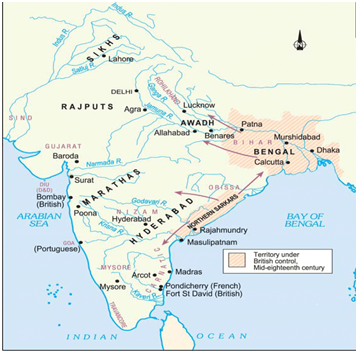
Crisis of Empire
Later Mughals and attacks
Emperor Aurangzeb has depleted the military and financial resources of his empire by fighting along war in the Deccan.Under his successors, the efficiency of the imperial administration broke down.It became increasingly difficult for the Mughal emperors to keep a check on the powerful mansabdars. Nobles appointed as governors(subadars) who controlled the offices of revenue and military administration (diwani and faujdari) as well. This gave them extraordinary political, economic and military powers over vast regions of the Mughal Empire. Peasants and zamindari rebellions in many parts of the northern and western India added to these problems.These groups were not able to seize the economic resources of the region to consolidate their positions.The Mughal emperors after Aurangzeb were unable to arrest the gradual shifting of political and economic authority into the hands of provincial governors, local chieftains and another groups.In the midst of this economic and political crisis, the ruler of Iran, Nadir Shah sacked and plundered the city of Delhi in 1739 and took away immense amounts of wealth.This invasion was followed by Afghan ruler Ahmad Shah Abdali, who invadednorth India 5 times between 1748 and 1761.The Empire was further weakened by competition among different groups of nobles. They were divided into two major groups, or fractions. The Irani's and Turanis(nobles of Turkish descent).The worst possible humiliation came when two Mughal emperors, Farrukh Siyar and Alamgir II were assassinated, and two other Ahmad Shah and Shah Alam II were blinded by their nobles.
Nadir shah attacks, Delhi
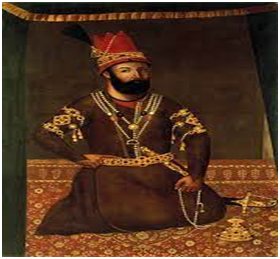
The devastation of Delhi after Nadir Shah’s invasion was described by contemporary observers. The wealth looted from Mughal treasury was- sixty lakhs of rupees and some thousand gold coins, nearly one crore worth of gold-ware nearly fifty crore worth of jewels, most of them unrivalled in the world, and the above included the Peacock throne.Another account describe the invasion’s impact upon Delhi.Those who had been masters were now in dire straits and those who had been revoked couldn't even quench their thirst. The recluses were pulled out of their corners. The wealthy were turned into beggars. Those who once set the style in clothes now went naked. And those who owned property, for now homeless. The new city Shahjahanabad was turned into rubble. Nadir Shah then attacked the old quarters of the city and destroyed the whole world that existed there.
Emergence of new states
- Books Name
- Social Science Book
- Publication
- Cognizance Publication
- Course
- CBSE Class 7
- Subject
- Social Science
Emergence of new states
Through the eighteenth century, the Mughal Empire gradually divided into a number of independent,regional states. These Independent states can be divided into 3 groups-
(1) States that were old Mughal provinces like Awadh, Bengal and Hyderabad.
(2) States that had enjoyed considerable independence under the Mughals as watan jagirs. These include several Rajput principalities.
(3) States under the control of Marathas, Sikhs and others like the Jats.These had seized their independence from the Mughals after a long-drawn armed struggle.
The old Mughal provinces
Amongst the states that were carved out of the old Mughal provinces in the eighteenth century, three stand out very prominently. These were Awadh, Bengal and Hyderabad.All three states were founded by the members of high Mughal nobility who had been governors of large provinces, Sa’adat Khan(Awadh), Murshid Quli Khan(Bengal) and Asaf Jah(Hyderabad). All these three had occupied high mansabdari positions and enjoyed the trust and confidence of the emperors.
Hyderabad
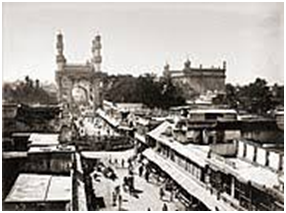
Founded by Nizam-ul-Mulk Asaf Jah(1724-1748) was powerful member at the Court of the Mughal emperor Farrukh Siyar.He was entrusted first with the governorship of Awadh, and later given charge of the Deccan.Governor of the Deccan provinces, during 1720-22 Asaf Jah already gained control over its political and financial administration.Asaf Jah broughtskilled soldiers and administrators from northern India who welcomed the new opportunities in the South. He appointed mansabdars and granted jagirs.Although he was still a servant of the Mughal emperor, he ruled quite independently without speaking any direction from Delhi or facing any interference.The state of Hyderabad was constantly engaged in a struggle against the Marathas to the west and with independent Telugu warriors chiefs(nayakas) of the plateau. The ambitions of the Nizam-ul-Mulk Asaf Jah to control the rich textile producing areas of the Coromandel coast in the East were checked by the British who were becoming increasingly powerful in that region. The Nijam has a sawari of 400 elephants, several thousands of horsemen near his person who receive upwards ₹100 as nominal pay and are extremely well mounted and richly caparisoned.
Awadh
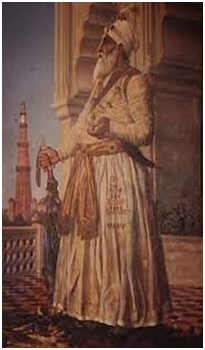
Burhan-ul-Mulk Sa’adat Khan who was appointed as subadar of Awadh in 1722 and founded a state which was one of the most important to emerge out of the breakup of Mughal Empire.Awadh was a prosperous region, controlling the rich alluvial Ganga plain and the main trade route between north India and Bengal.Burhan-ul-Mulk also held the combined offices of subadari, diwani andfaujdari. He was responsible for managing the political, financial and military affairs of the province of Awadh.Sa’adat Khan tried to decrease Mughal influence in the Awadh region by reducing the number of office holders appointed by the Mughals.He also reduced the size of jagirs,and appointed his own loyal servants to vacant positions.The account of jagirdars were checked to prevent cheating and the revenues of all districts were reassessed by officials appointed by Nawab’scourt. He seized a number of Rajput zamindaris, and the agriculturally fertile lands of the Afghans of Rohilkhand.The state depends on local bankers and mahajans for loan.It sold the right to collect tax to the highest bidders.These revenue farmers(ijaradars)agreed to apy the state a fix amount of money. Local bankers guaranteed the payment of this contracted amount to the state. In turn, the revenue-farmers were given considerable freedom in the assessment and collection of taxes.This allowed new social groups like moneylenders and bankers, to influence the management of the state’s revenue system, something which had not occurred in the past.
Bengal
Founded by Murshid Quli Khan. He very quickly seized all the power that went with formal subadar office.Like the rulers of Hyderabad and Awadh, he also commanded the revenue administration of the state.In an effort to reduce Mughal influence in Bengal, he transferred all Mughal Jagirdars to Orissa and ordered a major reassessment of the revenues of Bengal.Revenue was collected in cash with great strictness from all zamindars. As a result, many zamindars had to borrow money from bankers and money lenders. Those unable to pay were forced to sell their land to large zamindars.Under the rule of Alivardi Khan(1740-1756), the banking house of Jagat Seth became extremely prosperous.
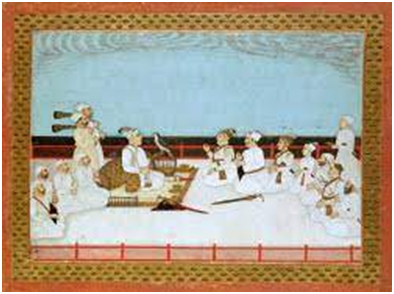
The three common features among these states are:
First, many of the largest states were established by erstwhile Mughal nobles. They were highly suspicious of some of the administrative systems that they have inherited,in particular the jagirdari system.
Second, method of tax collection differed.Rather than relying upon the officers of the state, all three regimes contracted with revenue farmers for the collection of Alivardi khan holding court revenue.The practice of ijardari thoroughly disapproved by the Mughals, spreads all over India in the eighteenth century.
The third common feature in all these regional state was there emerging relationship with rich bankers and merchants. Those people lent money to revenue farmers, received land as security and collected taxes from these land.Through their own agents.Throughout India, the richest merchants and bankers were gaining a steak in this new political order.
The Watan Jagirs of the Rajputs
Many Rajput kings were permitted to enjoy considerable autonomy in their watan jagirs. In the eighteenth century these rulers attempted to extend their control over adjacent regions. Ajit Singh, the ruler of Jodhpur, was also involved in the functional politics at the Mughal court.Rajit Singh of Jodhpur held the governorship of Gujarat and Sawai Raja Jai Singh of Amber was governor of Malwa.These offices were renewed by Emperor Jahangir Shah in 1713.They tried to extend their territories by seizing portions of imperial territories neighbouring there watans. Nagaur was conquered and annexed to the house of Jodhpur, while Amber seized large portion of Bundi.Sawai Raja Jaisingh founded his new capital at Jaipur and was given the subsidiary of Agra in 1722.Maratha campaigns into Rajasthan from the 1740s put pressure on these principalities and checked their further expansion.
Many Rajput rulers has accepted the suzerainty of Mughals, but Mewar was the only Rajput state which dified Mughal authority. Rana Pratap ascended the throne at Mewar in 1572, with Udaipur and large part of Mewar under his control. A series of envoys were sent to the Rana to persuade him to accept Mughal suzerainty but he stood his ground.
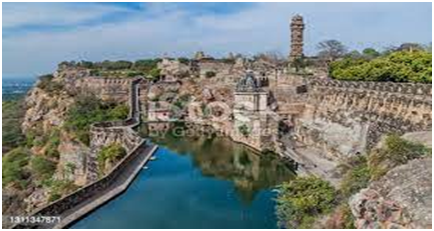
Many Rajput chieftains built a number of forts on hilltops, which became centres of power. With extensive fortifications these majestic structures housed urban centres, palaces, temples, trading centres, water harvesting structures and other buildings. The Chittorgarh Fort contains many water bodies wearing from talabs(ponds) to kundis(wells), baolis(stepwells) etc. Sawai Jai Singh, the ruler of Amber, constructed 5 astronomical observatories, one each in Delhi, Jaipur, Ujjain, Mathura and Varanasi, commonly known as Jantar Mantar.These observatories has various instruments to study heavenly bodies.
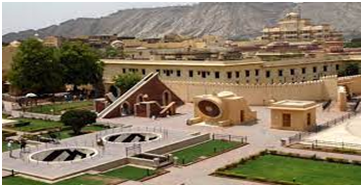
Seizing independence
- Books Name
- Social Science Book
- Publication
- Cognizance Publication
- Course
- CBSE Class 7
- Subject
- Social Science
Seizing independence
The sikhs
During the 17th century, sikhs built regional state Punjab. Several battles were fought by Guru Gobind Singh against the Rajput and Mughal rulers.Both before and after the institution of the Khalsa in 1699.After his death in 1708.The Khalsa rose in the world against the Mughal authority underBanda Bahadur’s leadership, declared their sovereign rule by striking coins in the name of Guru Nanak and Guru Gobind Singh and established their own administration between the Satluj and Jamuna.
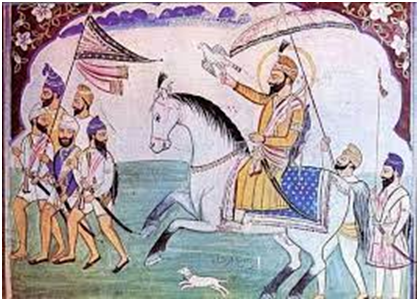
Banda Bahadur was captured in 1715 and executed in 1716. Under the number of able leaders in the eighteenth century, the Sikhs organised themselves into a number of bands called jathas and later on misls.Their combined forces were known as the grand army(dal khalsa). The entire body used to meet at Amritsar at the time of Baisakhi and Diwali to take collective decisions known as “resolutions of the Guru gurmatas”.A system called rakhi was introduced, offering protection to cultivators on the payment of a tax of 20 per cent of the produce.The khalsa declared their sovereign rule by striking their own coin again in 1765.Significantly, the coin bore the same inscription as the one on the orders issued by Khalsa in the time of Banda Bahadur.The Sikh territories in the late eighteenth century extended from the Indus to the Jamuna, but they were divided under different rulers. One of them, Maharaja Ranjit Singh, reunited these groups and established his capital at Lahore in 1799.
The Marathas
Chhatrapati Shivaji
Towards the end of the 17th century, a powerful state started emerging in the Deccan under the leadership of Shivaji, which finally led to the establishment of the Maratha state. Shivaji was born to Shahji and Jija Bai at Shivneri in 1630.Under the guidance of his mother and his guardian, Dada Konddev ,Shivaji embarked on a career of conquest at a young age. The occupation of javli made him the undisputed leader of the mavalahighlands, which paved the way for further expansion.
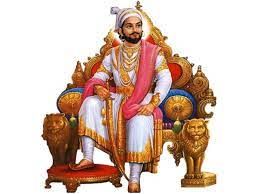
His exploits against the forces of Bijapur and the Mughals made him the legendary figure. He often resorted to guerrilla warfare against his opponents.He carved out a stable Maratha Kingdom with the support of powerful warrior family (deshmukhs).Groups of highly mobile peasant-pastoralists(kunbis), provided the backbone of the Maratha army.Shivaji, used these forces to challenge the Mughals in the peninsular.After Shivaji’s death, effective power in the Maratha state was wielded by a family of Chitpavan Brahmanas who served Shivaji successor as Peshwa(or principal minister).
Poona became the capital of Maratha Kingdom.Between 1720 and 1761, the Maratha empire expanded.Malwa and Gujarat were seized from the Mughals by the 1720s.The Maratha king was recognised as the overload of entire Deccan peninsula by the 1730s. He possessed the right to levy a chauth and sardeshmukhi in the entire region. Alongside endless military campaigns, the Marathas developed an effective administrative system as well. Agriculture was encouraged and trade revived, this allowed Maratha chief,like Sindhia of Gwalior, Gaekwad of Baroda and Bhonsle of Nagpur the resources to raise powerful armies.Ujjain expanded under Sindhia’s patronage and Indore under Holkar’s.By all accounts, these cities were large and prosperous, and functioned as important commercial and cultural centres.New trade routes emerged within the areas controlled by the Marathas. The silk produced in the Chanderi region now found a new outlet in Poona, the Maratha capital.Burhanpur, which has earlier participated in the trade between Agra and Surat, now expanded its hinterland to include Pune, Nagpur in the South and Lucknow and Allahabad in the east.
Bajirao I, also known as Bajirao Ballal, was the son of Peshwa Balaji Vishwanath. He was a great Maratha general who is credited to have expanded the Maratha Kingdom beyond the vindhyas and is known for his military campaigns against Malwa, Bundelkhand, Gujarat and the Portuguese.
Chaut-.25 percent of the land revenue claimed by zamindars.In the Deccan this was collected by the Marathas.
Sardeshmukhi-9 to10 percent of the land revenue paid to the head revenue collector in the Deccan.
The Jats
The Jats consolidated their power during the late 17th and 18th centuries.Under their leader, Churaman, they acquired control over territories situated to the west of the city of Delhi. The Jats were prosperous agriculturist, and towns like Panipat and Ballabgarh became important trading centers in the areas dominated by them.Under Surajmal, the Kingdom of Bharatpur emerged as a strong state.When Nadir Shah sacked Delhi in 1739, many of the cities notables took refugee there. His son Jawahir Shah, as 30,000 troops of his own and hired another 20,000 Marathas and 15,000 Sikh troops to fight the Mughals.The Bharatpur Fort was built in a fairly traditional style, at Dig the Jats built an elaborate garden palace combining styles seen at Amber and Agra. Its buildings were modelled on architectural forms, first associated with royalty under Shah Jahan.
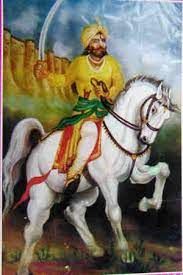
The power of the Jats reached its zenith under Surajmal, who consolidated the Jat state Bharatpur during 1756-1763. The areas under the political control of Surajmal broadly included part of modern eastern Rajasthan,southern Haryana, western Uttar Pradesh and Delhi.Surajmal built the number of forts and palaces and the famous Lohagad Fort in Bharatpur is regarded as one of the strongest forts built in this region.

 Cognizance Publication
Cognizance Publication
